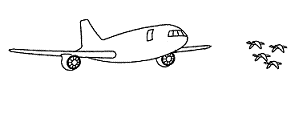Bird Strike Committee Proceedings
Date of this Version
August 2000
Abstract
The U.S. Department of Agriculture’s National Wildlife Research Center, through an Interagency Agreement with the Federal Aviation Administration (FAA), maintains a national database of reports of bird and other wildlife collisions (strikes) with civil aircraft. Wildlife strikes are an increasing problem that costs civil aviation in the USA over $350 million annually and the occasional loss of human lives. The database, with about 28,000 strike reports for 1990-1999, provides critical information to airport operators, biologists, engine manufacturers, aeronautical engineers and regulators in designing programs, policies, and aircraft to reduce damaging wildlife strikes. A major deficiency in the database, however, is that about 50% of the reported bird strikes provide no information on the bird species involved. To improve the identification of bird species involved in civil aircraft strikes, the National Wildlife Research Center has entered into an agreement with the Smithsonian Institution, Division of Birds. Dr. Carla Dove, Marcy Heacker-Skeans and their colleagues, at no cost to the airport or aircraft owner, will identify bird remains that are sent with the strike report (FAA Form 5200-7). Remains should be sent in a resealable plastic storage bag attached to Form 5200-7 to the address on the form (FAA Office of Airport Safety and Standards, AAS-310, 800 Independence Ave. SW, Washington, DC 20591). Send whole feathers when possible because diagnostic characteristics are often found in the fluffy part or barbs of the feather base. Beaks, feet, bones and talons also are useful diagnostic material. Pilots, aircraft maintenance and airport operations personnel, and others working on airports can greatly improve the utility of the National Wildlife Strike Database for Civil Aviation by having bird remains identified for strikes where there is uncertainty as to the species involved. The FAA Form 5200-7 for reporting bird strikes can be downloaded from http://www.faa.gov.arp/birdstrike. Additional information on bird strike reporting and wildlife hazard reduction at airports is available at www.birdstrike.org.

